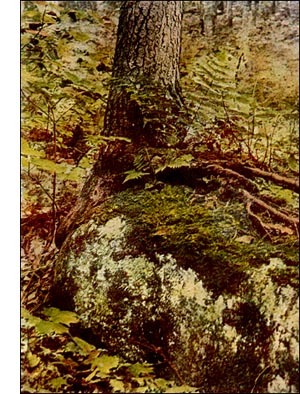Trematodon Ambiguum Moss
 Habit and habitat.-Wet sandy places on hills ; in peat-bogs, ditches, etc., of Alpine regions.
Habit and habitat.-Wet sandy places on hills ; in peat-bogs, ditches, etc., of Alpine regions.Name.-The specific name ambiguum, doubtful, was given to this species at the time it was classified in the genus Dicranum (1792) and expressed the doubt as to its rightful position, which was determined in 1803.
Plants (gametophyte).-Short, 1/2 to 1 inch long.
Leaves.-Open, lance-shaped, channelled ; apex long and slender ; base concave, oval-oblong ; margins entire, inrolled; vein extending beyond the leaf-blade (excurrent).
Leaves at the base of the pedicel.-Large, oblong, with a short tapering point. Perichaetial leaves.
Habit of flowering.-Male and female flowers in different places on the same plant (autoicous) ; male flowers terminal on a basal branch, bracts small, taper-pointed.
Veil (calyptra).-Translucent, slit on one side (cucullate).
Spore-case.-Oblong, straw-coloured or orange-brown ; in length equal to or shorter than the slightly arched neck (collum) which is swollen on one side at the base.
Pedicel (seta).-Long, twisted, 1/2 to 1 1/2 inches long, strawcoloured.
Lid (operculum).-Conical at the base; beak, long and oblique.
Teeth (peristome).-Cleft to near the base or in the middle only; segments sometimes irregularly torn.
Annulus.-Large, rolling back when mature.
Spores.-Mature in July and August.